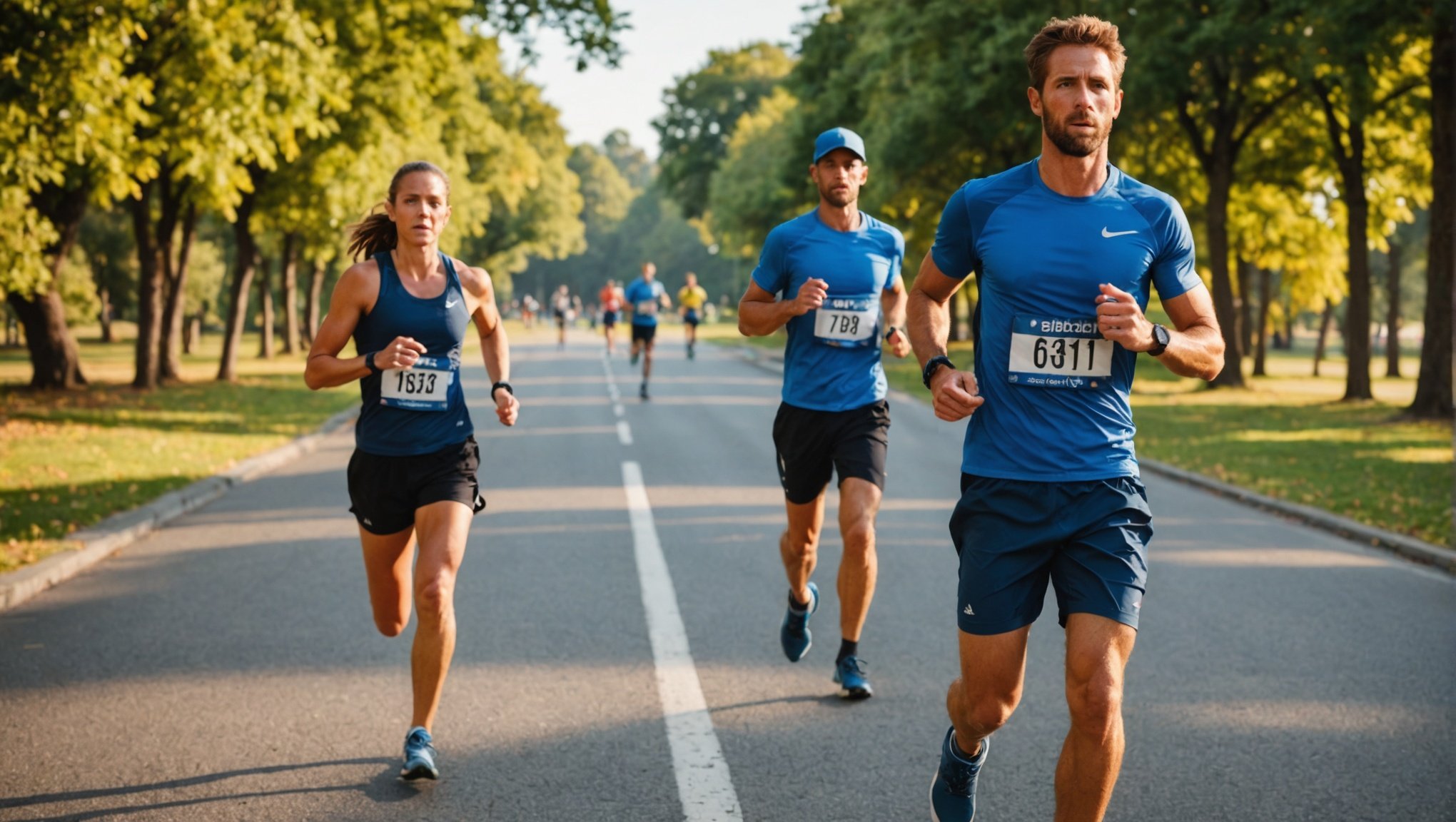Mastering Heat Acclimation: The Ultimate Guide for Marathon Runners to Optimize Training
When it comes to preparing for a marathon, especially in hot and humid conditions, heat acclimation is a crucial aspect of training that can significantly impact your performance and safety. Here’s a comprehensive guide to help you understand, implement, and benefit from heat acclimation in your training regimen.
Understanding Heat Acclimation
Heat acclimation is the process by which your body adapts to performing physical activities in high temperatures. This adaptation is essential for endurance athletes, particularly those training for marathons or other long-distance races that may take place in challenging weather conditions.
In parallel : Maximizing Triathlon Performance: Real-Time Insights on Training Intensity and Lactate Threshold
Physiological Adaptations
When you acclimatize to heat, several physiological changes occur that help your body cope better with the stress of high temperatures:
- Sweat Rate and Efficiency: Your body learns to sweat more efficiently, which helps in cooling down more effectively.
- Blood Volume: Your blood volume increases, allowing for better heat dissipation and maintaining blood pressure.
- Heart Rate: Your heart rate decreases for the same level of exertion, indicating improved cardiovascular efficiency.
- Muscle Function: Your muscles become more resistant to heat-induced damage, enhancing your overall performance[5].
Creating a Heat Acclimation Program
To develop an effective heat acclimation program, you need to consider several key factors and incorporate specific training strategies.
Also to read : Top Footwear Innovations to Minimize Impact for Long-Distance Trail Runners
Step-by-Step Heat Acclimation Program
Here is a structured approach to heat acclimation:
-
Week 1-2: Gradual Exposure
-
Start by exposing yourself to heat for short periods, such as 20-30 minutes, 2-3 times a week.
-
Engage in light to moderate intensity workouts during these sessions.
-
Week 3-4: Increased Duration and Intensity
-
Gradually increase the duration of your heat exposure to 45-60 minutes.
-
Increase the intensity of your workouts to moderate to high levels.
-
Week 5 and Beyond: Simulation and Integration
-
Simulate race conditions by running in the heat at your goal pace.
-
Integrate heat training into your regular training schedule, ensuring you have adequate recovery time[2].
Training Workouts
Incorporating specific workouts can enhance your heat acclimation:
- Tempo Runs and Interval Training: These high-intensity workouts help your body adapt to the demands of running in heat.
- Long Runs with Pace Segments: Include segments of your long runs at your goal pace to condition your body for the race day experience.
- Strength Training: Incorporate strength training to build overall resilience and endurance. Focus on exercises that target your core, legs, and glutes[2].
Nutrition and Hydration Plan
A well-planned nutrition and hydration strategy is vital for successful heat acclimation and overall performance.
Hydration
- Pre-Run Hydration: Ensure you are well-hydrated before starting your run. Aim to drink at least 16-20 ounces of water 1-2 hours before your workout.
- During Run Hydration: Use a hydration plan that includes electrolyte-rich drinks to replace lost salts and minerals.
- Post-Run Hydration: Rehydrate within 30 minutes after your run with a mix of water and electrolytes.
Nutrition
- Electrolyte Balance: Include foods rich in electrolytes such as bananas (potassium), avocados (potassium), and nuts (magnesium) in your diet.
- Carbohydrate Loading: Ensure you have a balanced carbohydrate intake to fuel your workouts and aid in recovery.
- Hydrating Foods: Incorporate hydrating foods like watermelon, cucumbers, and celery into your diet[2].
Monitoring Your Body
Monitoring your body’s response to heat training is crucial for avoiding overtraining and ensuring effective acclimation.
Heart Rate and Perceived Exertion
- Heart Rate Monitoring: Use a heart rate monitor to track your heart rate during workouts. A lower heart rate for the same level of exertion indicates improved acclimation.
- Perceived Exertion Scale: Use the perceived exertion scale (RPE) to gauge how hard you are working. Aim for a balanced effort level that allows for recovery and adaptation[2].
Recovery and Rest
- Adequate Rest: Ensure you get enough sleep and rest days to allow your body to recover from the stress of heat training.
- Cooling Down: After each workout, take time to cool down properly. This can include stretching, foam rolling, and using cooling devices like cooling towels or ice baths.
Race Day Strategies
On race day, your heat acclimation training will be put to the test. Here are some strategies to help you optimize your performance:
Pacing Strategy
- Negative Split: Start slightly slower and gradually increase your pace as the race goes on. This helps in conserving energy and avoiding early burnout.
- Even Pacing: Maintain an even pace throughout the race to avoid inconsistent splits that can lead to energy depletion[2].
Adapting to Conditions
- Weather Adjustments: Be prepared to adjust your pace based on the weather conditions. Heat, humidity, and wind can all impact your performance.
- Terrain Awareness: Understand the terrain of the race course and adjust your strategy accordingly. Hills, trails, and other challenging terrains require different pacing strategies.
User Stories and Practical Insights
Here are some practical insights and user stories that highlight the importance and effectiveness of heat acclimation:
Example: Heat Acclimation in Ultra Running
Ultrarunners often face extreme heat conditions during their races. For instance, an ultrarunner preparing for a desert ultra-marathon might start their heat acclimation program 6 weeks prior to the race. They would gradually increase their exposure to heat, incorporate high-intensity interval training, and focus on a balanced nutrition and hydration plan.
“Heat acclimation was the game-changer for me in my last ultra-marathon. By the time I hit the hot desert terrain, my body was fully adapted, and I was able to maintain a consistent pace without feeling overwhelmed by the heat.” – Sarah, Ultrarunner[5].
Table: Comparing Different Heat Acclimation Programs
Here is a comparative table highlighting different aspects of heat acclimation programs:
| Program Aspect | Basic Heat Acclimation | Advanced Heat Acclimation | Elite Heat Acclimation |
|---|---|---|---|
| Duration | 2-3 weeks | 4-6 weeks | 8-12 weeks |
| Intensity | Light to moderate | Moderate to high | High intensity |
| Frequency | 2-3 times a week | 3-4 times a week | Daily or every other day |
| Workouts | Short runs, walks | Tempo runs, interval training | Long runs, strength training |
| Nutrition | Basic hydration plan | Balanced electrolyte intake | Customized nutrition plan |
| Monitoring | Basic heart rate monitoring | Advanced heart rate and RPE | Comprehensive physiological monitoring |
Mastering heat acclimation is a critical component of marathon training, especially for races held in hot and humid conditions. By understanding the physiological adaptations, creating a structured heat acclimation program, focusing on nutrition and hydration, monitoring your body, and adapting your race day strategy, you can significantly enhance your performance and ensure a safer, more successful run.
Remember, heat acclimation is not just about running in the heat; it’s about aligning your physical capabilities, mental fortitude, and external conditions to execute the perfect race day plan. With the right approach and dedication, you can optimize your training and achieve your marathon goals even in the most challenging conditions.






